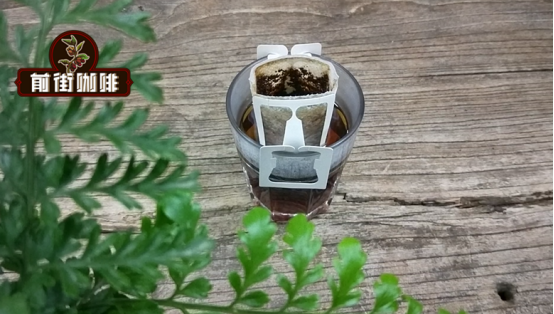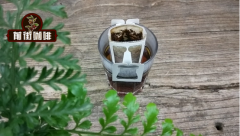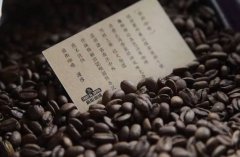Gold Cup extraction Formula Gold Cup extraction Water Powder ratio Coffee Technical term Coffee term explanation

Explanation of Coffee Professional terms
Cooking method:
The method of making coffee from roasted coffee beans. In the procedure, there are two stages: grinding coffee beans (grinding), dissolving solids with water, separating and filtering coffee grounds (brewing).
Grinding:
The process of crushing cooked beans into coffee powder with proper equipment. The reason why cooked beans need to be ground into powder is to greatly increase the total surface area of cooked beans and to improve the speed of hot water to dissolve solids.
Good grinding procedures must pay attention to the following:
1. Controllable powder fineness
two。 Acceptable uniformity of powder thickness
3. Minimize the temperature change of coffee powder before and after grinding
4. Grinding time as short as possible
Grinding:
The process of crushing cooked beans into coffee powder with proper equipment. The reason why cooked beans need to be ground into powder is to greatly increase the total surface area of cooked beans and to improve the speed of hot water to dissolve solids.
Good grinding procedures must pay attention to the following:
1. Controllable powder fineness
two。 Acceptable uniformity of powder thickness
3. Minimize the temperature change of coffee powder before and after grinding
4. Grinding time as short as possible
Bean grinder:
Equipment for performing grinding procedures. Individual designs vary greatly, but all include modules such as bean feeding, bean feeding, grinding plate, powder extraction, powder storage and so on.
Usually we use the design of the grinding plate to distinguish the use and grade of the bean grinder. The general household or shop bean grinder grinding plate (or "knife head") is roughly divided into ghost teeth, flat knives, cone knives and mixed knives.
Extraction rate:
In the process of extraction, the ratio of the mass of the final extracted components to the total amount of the extract:
Extraction rate of coffee powder (E) = quality of dissolved solids (Ms) / total mass of coffee powder (Mb)
Concentration:
In coffee, the ratio of total solids to the total amount of coffee in a whole cup is usually expressed as a percentage of weight (mass). That is,
Coffee concentration (W) = quality of solids in cup (Ms) / quality of coffee in cup (Mc) * 100%
Sorting out the above formulas of extraction rate (E) and concentration (W), the following results can be obtained:
Coffee concentration (W) = (coffee powder extraction rate (E) * total coffee powder mass (Mb)) / coffee quality in the cup (Mc)
Due to the small amount of coffee solids extracted, the concentration can be expressed as an approximate formula:
Coffee concentration (W) = coffee powder extraction rate (E) * [coffee powder amount (Mb) / brewing water (Mw)]. Coffee concentration = coffee powder extraction rate * powder / water ratio
In other words, the higher the extraction rate of coffee beans and the more powder, the stronger the coffee.
Gold Cup Theory:
Traditionally, brewers pay attention to adjusting the flavor of coffee by changing the concentration, but pay less attention to the "what to extract" of the same coffee powder. The soluble solids in coffee beans are not a single component, and the molecules are also large and small. When the soaking time is short, the small molecules with sweet and sour taste dissolve first, and after soaking for a little longer, the macromolecular substances with bitter taste slowly come out. Therefore, the extraction rate is low, the coffee flavor is sweet and sour, and the extraction rate is high.
It's more bitter. The golden cup theory tells us that when the extraction rate of coffee powder is 1822% and the concentration of coffee brewed with it is between 1.15 and 1.35%, the flavor of coffee is more popular. This conclusion comes from a large-scale consumer survey in the 1950s, after which the American Fine Coffee Association and the European Fine Coffee Association continued to develop relevant charts, brewing methodologies and testing tools.
Important Notice :
前街咖啡 FrontStreet Coffee has moved to new addredd:
FrontStreet Coffee Address: 315,Donghua East Road,GuangZhou
Tel:020 38364473
- Prev

How to brew the hanging-ear coffee bag? how to make the hanging-ear coffee?
How to correctly use filter-mounted coffee bags (hanging ear bags)? Filter-hanging coffee bags (hanging ear bags) are favored by the majority of coffee lovers, and their popularity on store shelves is almost on a par with instant coffee bags. Compared with the instant bag, the hanging ear bag is made from the grinding and packaging of coffee beans, and its flavor is comparable to that of instant coffee processed by secondary extraction distillation. In addition, when
- Next

What is the difference between coffee, cooked beans, comprehensive beans and single beans? single beans or mixed beans?
Coffee cooked bean noun: single bean / manor bean: roasted cooked bean, if the ingredient comes from a single producing area, it is called by a single treatment method. With the prevalence of boutique coffee in modern times, consumers are no longer satisfied with the so-called "producing areas" for the origin of beans, and people are looking forward to the outstanding performance of the unique planting and treatment methods of the manors (or farms) in the producing areas. So, in the world of boutique coffee
Related
- Beginners will see the "Coffee pull flower" guide!
- What is the difference between ice blog purified milk and ordinary milk coffee?
- Why is the Philippines the largest producer of crops in Liberia?
- For coffee extraction, should the fine powder be retained?
- How does extracted espresso fill pressed powder? How much strength does it take to press the powder?
- How to make jasmine cold extract coffee? Is the jasmine + latte good?
- Will this little toy really make the coffee taste better? How does Lily Drip affect coffee extraction?
- Will the action of slapping the filter cup also affect coffee extraction?
- What's the difference between powder-to-water ratio and powder-to-liquid ratio?
- What is the Ethiopian local species? What does it have to do with Heirloom native species?

